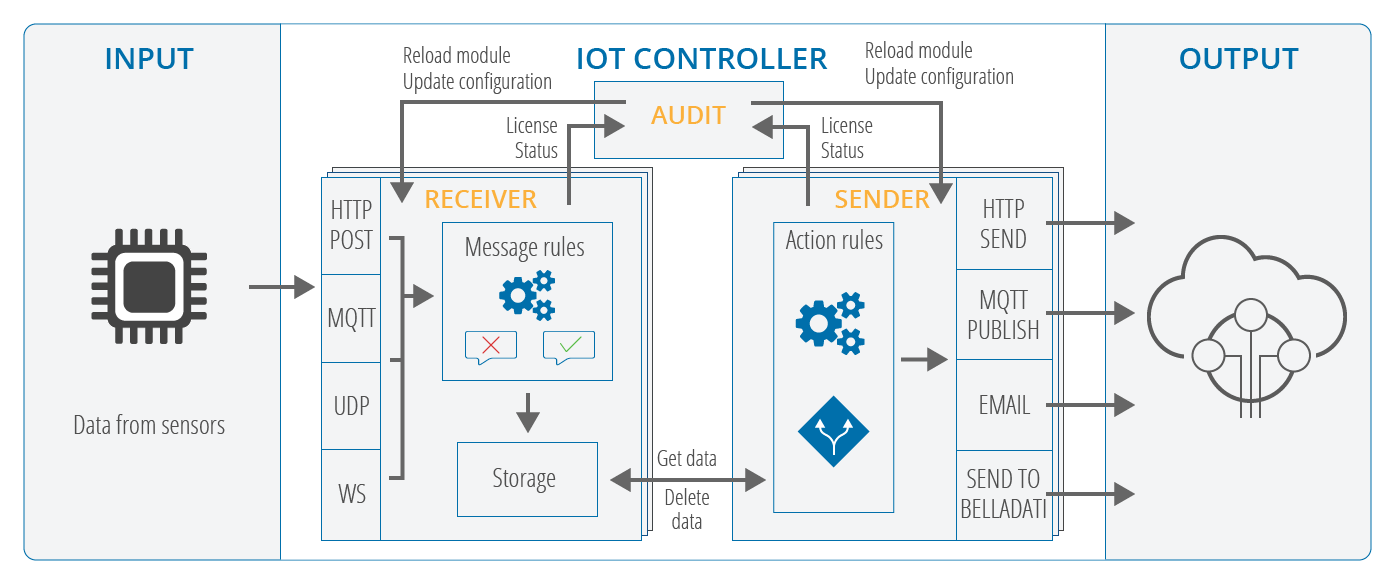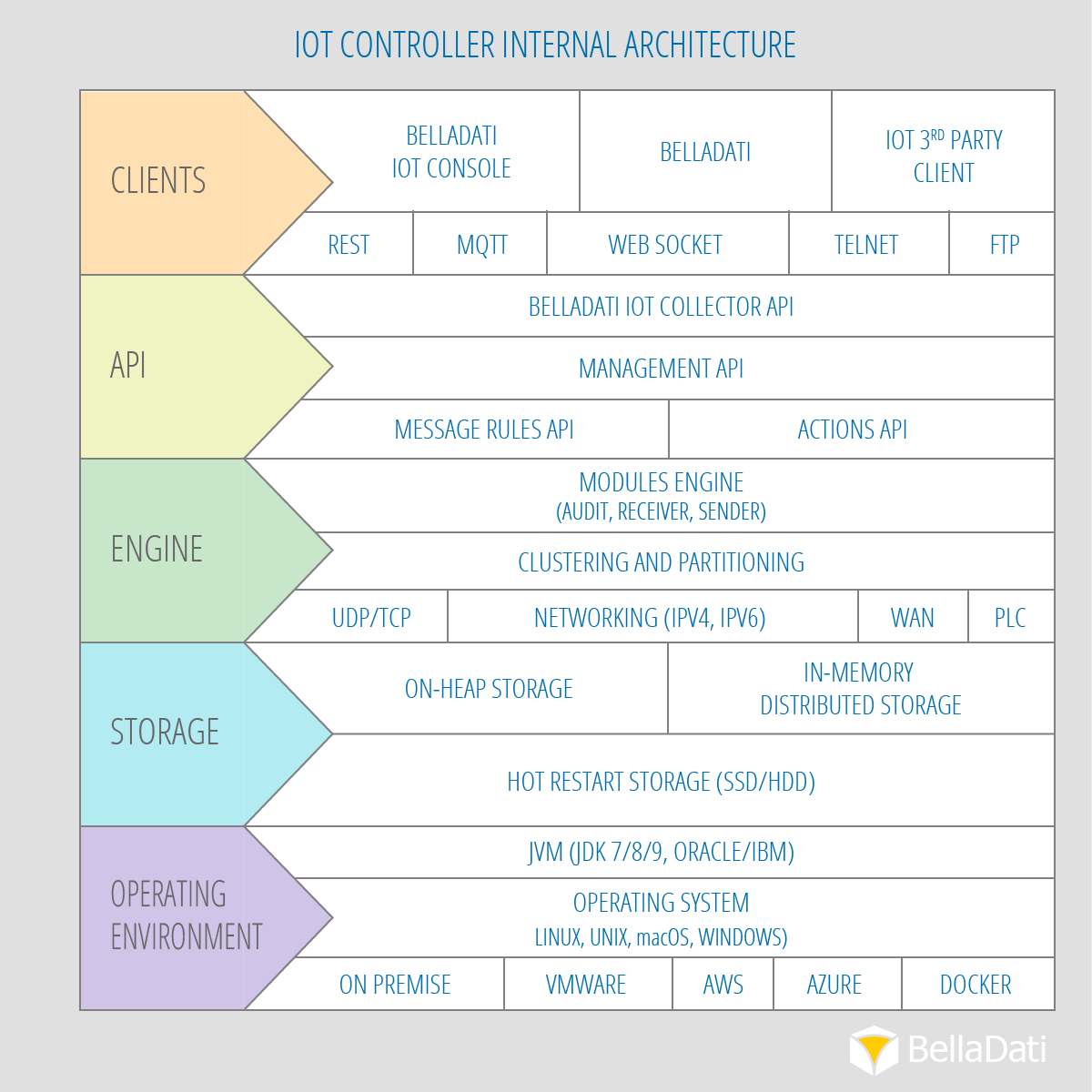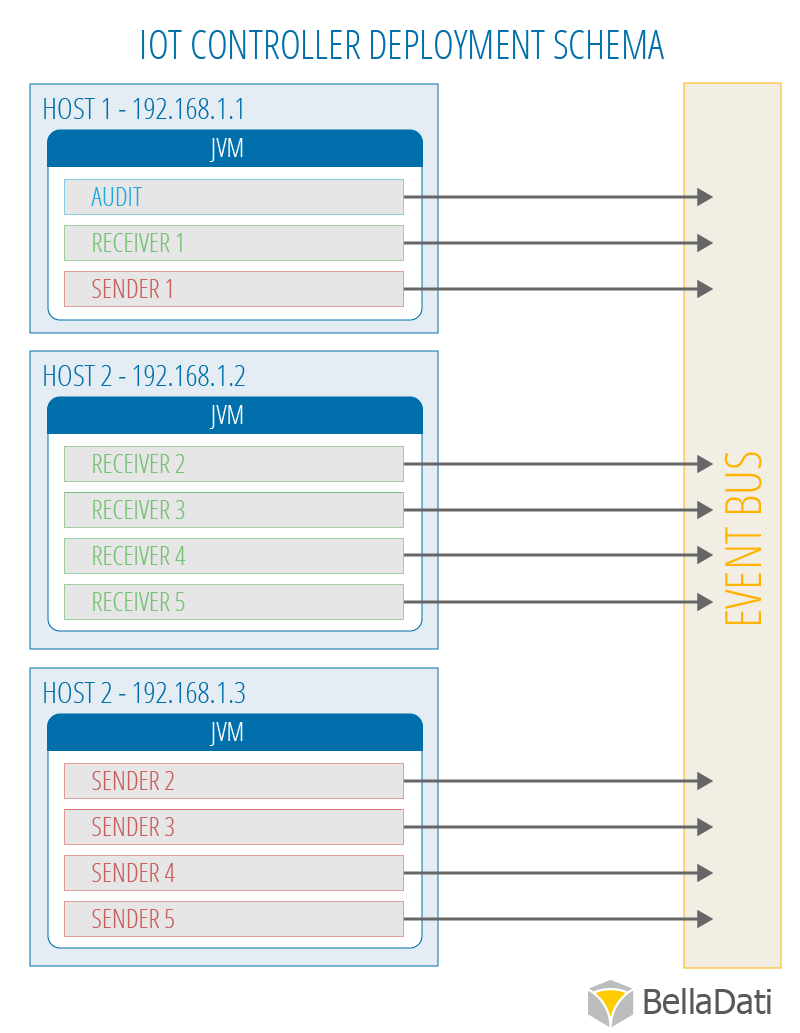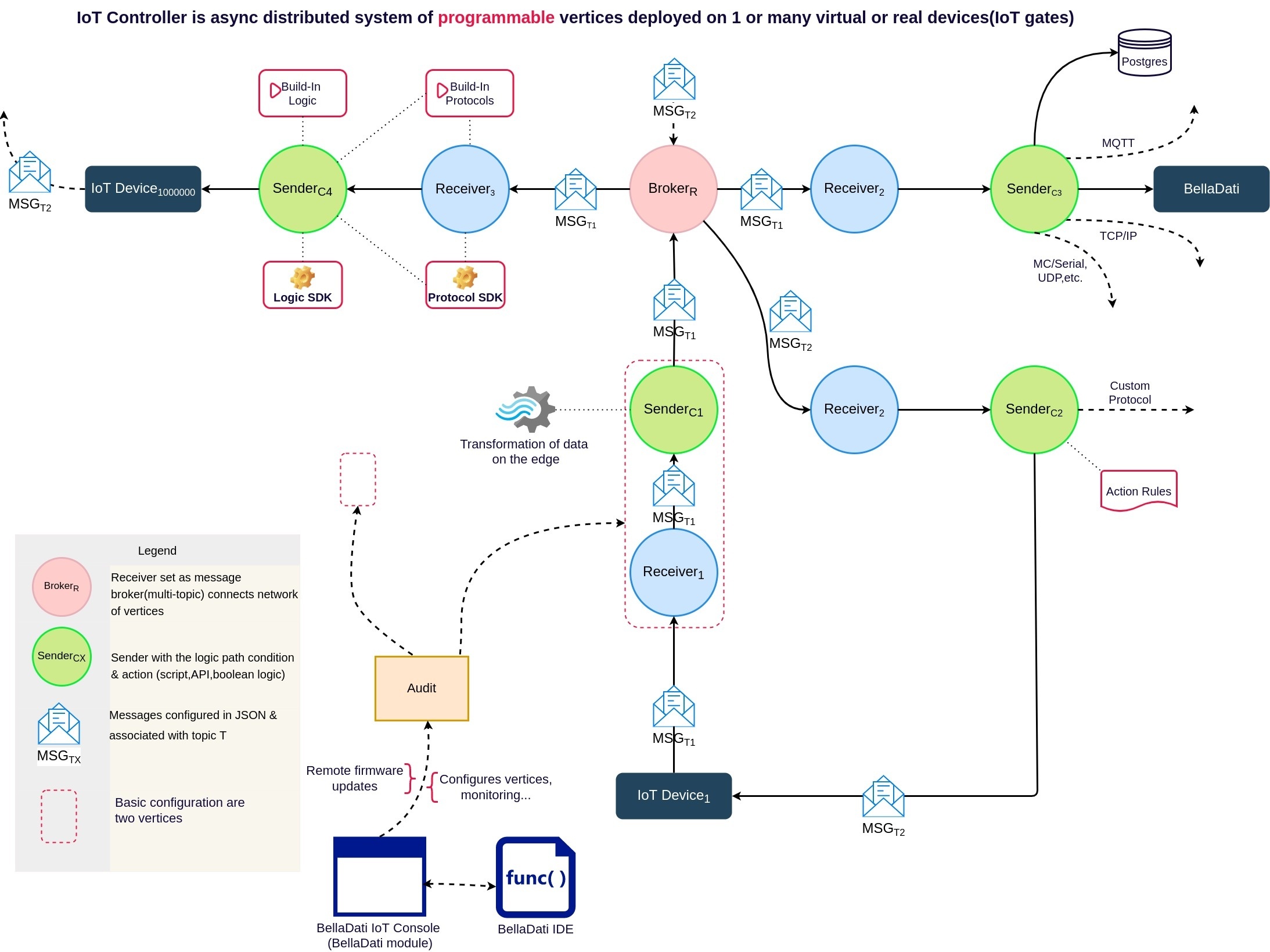Controller modules
Audit
Provides licensing and management services to other modules
- provides auditing services and provides status of receivers and sensors
- recognizes and cooperates with all receivers and senders that are deployed on the same local machine or on remote machines
- It automatically recognizes other modules, that are running on the same machine or on different servers
Receiver
Receives data from IoT devices, eventually subscribes the data published by external services. It provides authentication and message verification mechanism to ensure the data security and integrity. There are several modes, in which the Receiver can operate:
- MQTT server - module is running as MQTT server, which allows devices to either subscribe or publish messages to it
- MQTT subscribe - module subscribes to existing MQTT broker and receives messages from it
- HTTP POST consumer - module accepts HTTP POST request with data from devices
- UDP server - module accepts UDP datagrams
- Telnet server/client - module is running as telnet server or telnet client
- Websockets server/client - module - module is running as Websockets server or client
- JMS client - module able to communicate with other systems over JMS messaging protocol
- RTSP client - module able to connect to RTSP video streams, capture image data and metadata for further processing
- Keyence MC serial/TCP - module connecting to PLCs over serial and TCP connections in binary and ascii mode
Modbus PLC - module implementing PLC4X framework to support Modbus communication protocol
- PLC4X - extendable module supporting variety of protocols such as AB-Ethernet, ADS /AMS, BACnet/IP, CANopen, DeltaV, DF1, EtherNet/IP, Firmata, KNXnet/IP, OPC-UA, S7 and transports, e.g. TCP, UDP, Raw Socket, Serial Port, CAN bus, SocketCAN, PCAP replay
- Custom module - module implemented using IoT Controller SDK with wide range of options
Sender
Sender is used to read data from receiver and conditionally execute automated actions, for example:
BellaDati REST - Send data to the BellaDati backend over REST API, single or bulk mode for huge data loads
- BellaDati Data set - Send data directly to BellaDati data sets
HTTP based - Send data to 3rd party systems using HTTP protocol with wide range of authentication options support
SMTP - Use SMTP action to execute send email actions
Filesystem - store data to filesystems
MQTT publish - Publish MQTT messages to the MQTT broker
- Modbus publish - Publish messages using Modbus protocol
- PLC4X publish - extendable module supporting variety of protocols such as AB-Ethernet, ADS /AMS, BACnet/IP, CANopen, DeltaV, DF1, EtherNet/IP, Firmata, KNXnet/IP, OPC-UA, S7 and transports, e.g. TCP, UDP, Raw Socket, Serial Port, CAN bus, SocketCAN, PCAP replay
- Custom action - Custom action implemented using IoT Controller SDK
Modules API
Each IoT Data Controller module provides set of HTTP endpoints, which can be used to manage module's configuration, read status or received data.
Scalability and distributed processing
- BellaDati IoT Data Controller is built on top of native clustering and distributed storage approach.
- Messages are distributed among the modules running in a computer cluster, which allows horizontal scaling of processing and available storage.
- Message backups are also distributed among particular modules to protect against failure of any single module.
- BellaDati IoT Data Controller provides central, predictable scaling of applications through in-memory access to frequently used data and across an elastically scalable data grid.
- BellaDati IoT Data Controller is a robust and layered system, which ensures adequate stability and reliability
Microservices based architecture
BellaDati IoT Data Controller is implemented in reactive style, which is a new way of building distributed applications taking advantages of modern CPU architectures and using resources more efficiently. Combined with microservices, it provides a perfect flexibility where each of its modules is individually developed, released, deployed, scaled, updated and reloaded. It also infuses the required resilience into the system to avoid failure cascading and keep the system responsive even when facing failures. Last but not least, the asynchronous communication, promoted by its reactive implementation, copes with the interaction challenges, but also the concurrency required to face load variations.
BellaDati IoT Data Controller is distributed reactive system, running on the top of the Java Virtual Machine using an asynchronous and non-blocking development model. Its ecosystem are just JAR files used and has four key properties:
- Uses asynchronous message-passing
- Is elastic
- Is resilient
- Is responsive
Each of the Controller modules, which are forming the BellaDati IoT Data Controller, interact using asynchronous message-passing regardless of whether these modules are co-located or distributed. Each module reacts to the received message by using an asynchronous non-blocking development model. This allows the Controller to more effectively share resources by doing work only in response to outside messages.
Controller modules are also elastic, meaning they react to increasing load well because of the architecture highly concurrent and distributed. It also takes advantages of multi-core CPUs.
Controller modules are also resilient, treating failure as a first-class citizen --- it can face failures, isolate them, and recovers using sophisticated strategies.
The final property, responsive, means the Controller is real-time and engaging. It continues to provide its service in a timely-fashion even when the system is facing failures or peak of demand.
Programmable Logical Path
IoT Controller enables architects to build network of vertices, apply conditions, protocols and build custom logic, that controlls IoT devices. Diagram below is explaining the concept of building such product logic in greater detail.



